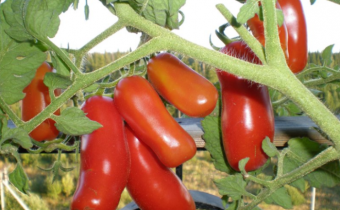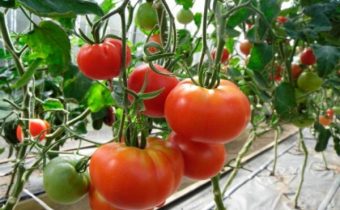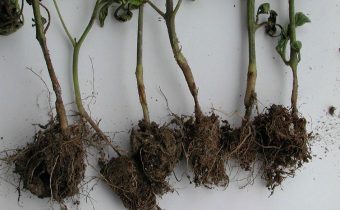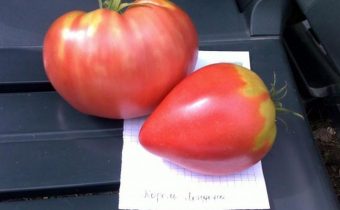Powdery mildew fighting on tomatoes with folk remedies
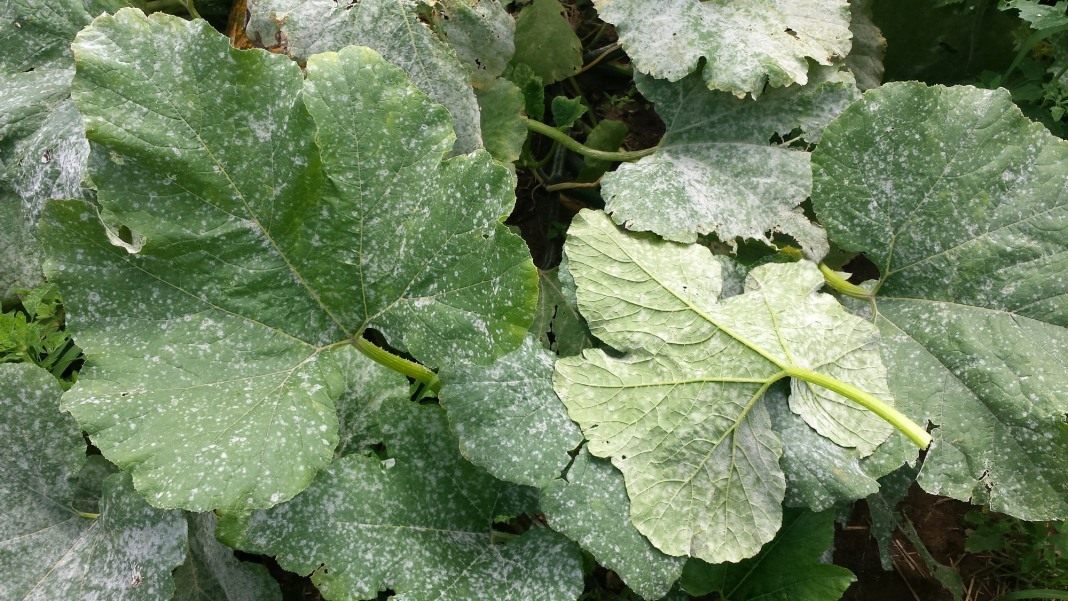
Disease destroys crop and motivation
So, from the topic of the article it is clear what ailment we will disassemble today - it is powdery mildew on tomatoes, it is she in the photo. How to fight, what signs and what to do to save the fruits, while not getting poisoned with chemicals - this is what we will talk about. Mealy dew is an insidious disease, it affects not only tomatoes, but also other crops and often flowers.
The view on the beds becomes dull, but this disease has one plus, well, if you can call it that, it is easy to determine the dew. It really resembles a bloom of flour, as if someone had sprinkled the beds, and part of the leaves got dirty. But if time does not take action, you can lose the leaves first, and after the entire harvest.
How does powder mildew look like?
Bacteria, viruses, fungi cause diseases. The latter are the cause of today's illness. Mushrooms grow on the surface, after which a liquid appears on the leaves, which is why it was named dew. The disease can affect not only the green part, but also the fruits themselves, then they begin to burst, rot. The stems and flowers begin to darken, under the skin on the tomatoes you can see brown spots, at first the tomatoes are dense, after they grow and become soft.
See also: Why do tomato leaves turn yellow in the greenhouse and how to deal with it?
Important!
If you notice the first signs of a raid, then urgently it is better to remove the infected parts, and begin to act with the help of commercial preparations or popular methods.
Treatment of folk powdery mildew on tomatoes
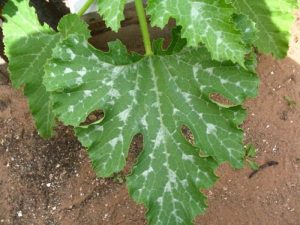 Previously, people raised crops, and there were no drugs to stimulate growth, destroy pests, fight bacteria. All exits were sought using various popular methods. They have not lost their effectiveness, but have lost their relevance. This is because the shops abound with different chemicals, which helps to quickly solve the problem, but in pursuit of time we forget about the dangers. Spraying chemicals, we can not count on an environmentally friendly crop. Where better to first try the folk methods. About them and read on.
Previously, people raised crops, and there were no drugs to stimulate growth, destroy pests, fight bacteria. All exits were sought using various popular methods. They have not lost their effectiveness, but have lost their relevance. This is because the shops abound with different chemicals, which helps to quickly solve the problem, but in pursuit of time we forget about the dangers. Spraying chemicals, we can not count on an environmentally friendly crop. Where better to first try the folk methods. About them and read on.
Soda Solutions
Soda ruins fungi, it can be used for the treatment of diseases of people and plants. So, pour five liters of very hot water, pour in a tablespoon with a slide of soda, and then rub a small piece of soap. The soda should be extinguished, the soap should dissolve, the solution cool. Spray them bushes in the morning or in the evening, but not in the heat, every three days, until the illness recedes.
Important!
Not only process the bushes, but the soil around.
Milk serum
It covers the leaves, not allowing fungi to grow and multiply. Plus, in additional fertilizer landings. Spraying is carried out every three days, it will take 3-5 times. The proportions are 1:10, that is, dilute a liter of serum in a bucket of water.
Bordeaux mixture and blue vitriol
These two remedies well help from illnesses, serve as prevention. The first is diluted with a bucket of water - 100 grams, the second - 200 grams per bucket of water. Of course, it is desirable to carry out the treatment not only when you have already noticed a defeat, but for the first time two weeks after planting the seedlings in the ground or in the greenhouse.
See also: Top dressing tomato during flowering and fruit set
Important!
If the plants start to hurt, then they cultivate not only their soil, but also the area around and the greenhouse. It is also important to always observe crop rotation.
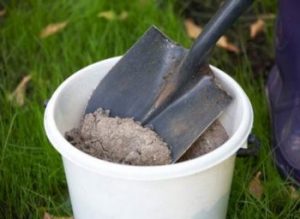 Ash
Ash
Ash has long been used for the treatment of plant diseases and as a fertilizer. Therefore, it is always better to prepare it in advance before the start of the summer season. The best solution on ash is the one that stood for a week. But during this time, your landing can suffer greatly. It is better to have the infusion at hand, use for prevention, and if your bushes are healthy, then it can be poured simply into the soil as a feed, and a remedy for parasites. Dilute a liter of ash to a bucket of very hot water, let it stand. If you can not wait, then use the solution immediately after it has cooled.
Important!
Powdery dew can cause high humidity in the soil, thickening of plantings, weeds, lack of nutrients or their excess, namely, excess nitrogen. Watch your garden.
Potassium permanganate
Excellent this solution destroys all fungi, bacteria. 2.5 grams are divided into a bucket of water and the treatment is carried out in the morning or in the evening once every five days, until the ailment recedes.
Garlic
Garlic has long been valued for its ability to fight the entire pathogenic environment. We use it when we get sick ourselves, but we can do it even when our garden suffers. At the same time, garlic does not tolerate many insect pests. What a big plus, because diseases and parasites are able to negate all efforts for the months in a season and deprive the harvest.
2-3 heads of garlic are taken, crushed with a blender or simply crushed through a garlic dish. All is poured over with two liters of water, an infusion costs for two days, preferably, and the soil is shed and the plants are sprayed.
See also: Tomato varieties with photos and descriptions
Infusion of tansy
The plant is famous for its healing properties, do not like her like garlic parasites. 30 grams of raw material is poured with warm water - 10 liters. Let stand, after which the bucket of infusion should be boiled on the fire, let cool and use for processing.
Tip!
You can also use powdery mildew on tomatoes as a measure of control not only folk remedies, but also biological products such as Epin and Immunocytophyt, Fuzaxin, Baktofit, Gumat, Monofilin.
These methods can help to cope with the disease, but you need to act on time and quickly. Do not hesitate, otherwise you will have to apply chemistry or remove the bushes completely.


